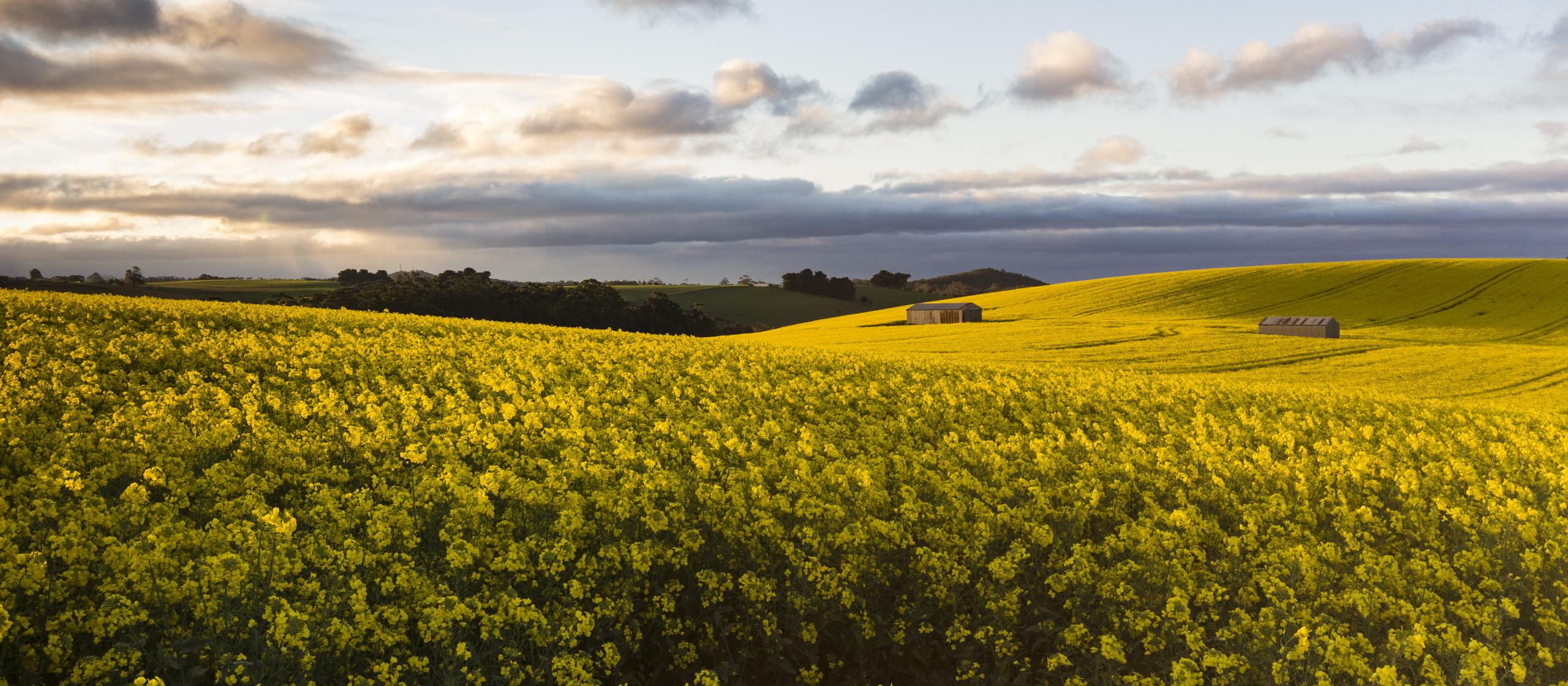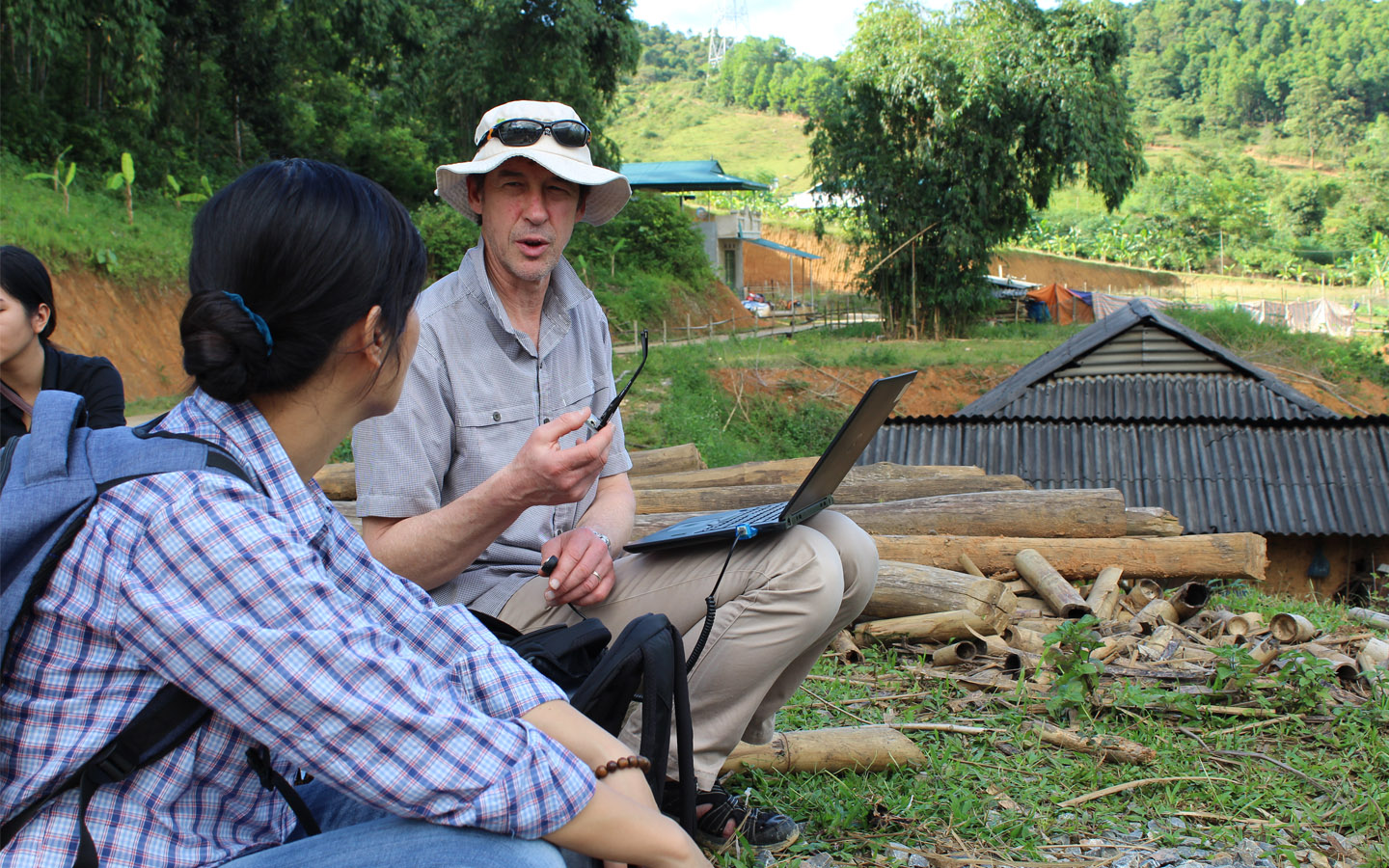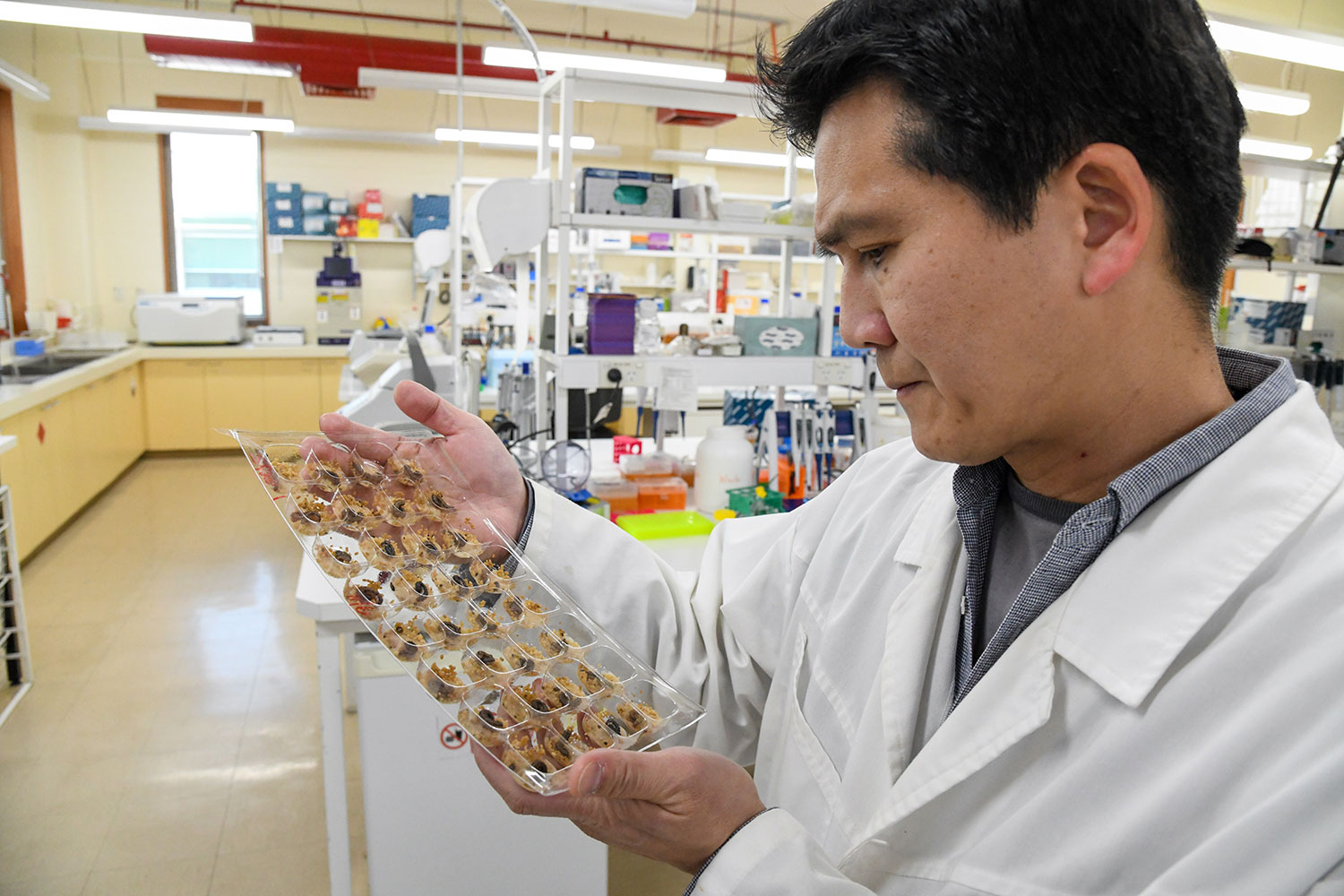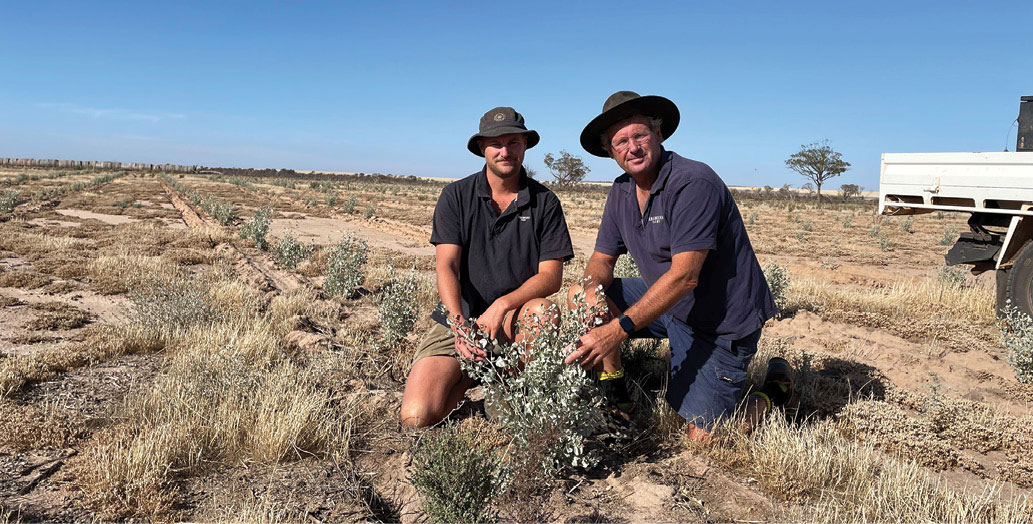- HomeHome
-
About ACIAR
- Our work
- Our people
-
Corporate information
- ACIAR Audit Committee
- Commission for International Agricultural Research
- Policy Advisory Council
- Agency reviews
- Executive remuneration disclosure
- Freedom of information (FOI)
- Gifts and benefits register
- Information publication scheme
- List of new agency files
- Contracts
- Legal services expenditure
- Privacy impact assessment register
- Commonwealth Child Safe Framework
- Benefits to Australia
- Careers
- 40 years of ACIAR
-
What we do
- Programs
- Cross-cutting areas
- Resources
- Where we work
-
Funding
- Research projects
- Fellowships
-
Scholarships
- John Allwright FellowshipScholarships to study in Australia for ACIAR partner country scientists to have Australian postgraduate qualifications
- ACIAR Pacific Agriculture Scholarships and Support and Climate Resilience Program
- Alumni Research Support Facility
- Publications
- News and Outreach
Date released
21 June 2021
Tasmanian farmers and scientists have been reaping the benefits of agricultural research in developing nations. The research, funded by ACIAR, supports farm productivity and sustainability in Asian, Pacific and African nations.
University of Tasmania agronomist Dr Stephen Ives said being involved in research-for-development was incredibly valuable for protecting and promoting Tasmanian agriculture.
“Helping neighbouring nations by sharing Tasmania’s agricultural expertise has untold benefits for local farmers and regional communities,” Dr Ives said.
“We get to partner with overseas institutions to build their capacity in finding improved ways of farming.
“For example, we have had Vietnamese researchers in Tasmania working to enhance prime lamb performance and meat quality by using omega-3 PUFA rich flaxseed and canola oil dietary supplements.”
Another research project in Tasmania is being conducted by a young Vietnamese researcher to test alternative perennial legume species in mixed swards, using alternative sowing techniques.
Dr Ives said being involved with research in developing nations created partnerships, improved research capacity, built trade connections and opened new markets.
“At the most basic level, as an exporting state, Tasmania does better when our neighbours can afford to buy our meat, vegetables, wine and wool, and they demand higher quality food,” he said.
“By bringing our research partners to Tasmania to meet local farmers, processors and industry bodies we can show them what we have to offer and what we can collaborate on.”
Fiona Simson, president of the National Farmers’ Federation, is also the chair of the Commission for International Agricultural Research, which oversees the work of ACIAR.
Ms Simson said funding research-for-development had particularly practical benefits for Tasmanian biosecurity.
“Whether we think about biosecurity, trade, supply chains or food security, we can see the activities and work ACIAR does in other nations coming back to help us,” Ms Simson said.
“Australian scientists working on pests and diseases in developing countries can help to limit the spread of major problems before they reach our borders.
“They also get to work on problems that thankfully don’t (yet) exist here and learn more about detecting and controlling exotic pests and diseases such as fall armyworm.”
ACIAR is funding research by the CSIRO to understand the genetic make-up of fall armyworm, a plant pest which has spread rapidly across Africa and Asia since 2016 and reached Australia in early 2020.
CSIRO’s Dr Sarina Macfadyen said the pest could easily travel large distances and needed a coordinated response.
“There are two strains of fall armyworm that look on the surface to be identical, but one preferentially feeds on rice and pasture grasses and the other one feeds on maize,” Dr Macfadyen said.
“Part of this research will focus on a genetic characterisation of the similarities and differences in the populations found in Australia and the countries in Southeast Asia.
“The second area of research involves testing populations that may already show some level of resistance to common pesticides. The team will look for mutations that makes them able to withstand pesticides and then expose them to different pesticides.”
In 1995, ACIAR-funded fruit fly research which directly helped mango farms in North Queensland, when exports to Japan were withdrawn due to fruit fly incursions.
The Queensland Department of Primary Industries was able to develop postharvest treatment protocols for Australian mangoes much faster because of its work for ACIAR in Malaysia, resulting in approval to restart exports at least six months sooner than expected.
ACIAR-funded research has also been crucial to controlling problems like Panama Disease in bananas and Newcastle Disease in poultry.
One of seven Commissioners for International Agricultural Research, Tony York, is a third-generation farmer near the central wheatbelt town of Tammin in Western Australia.
His family farms more than 10,000 arable hectares of wheat, barley, canola, various legumes, a Merinobased sheep flock of 5,000 head and 4,000 hectares of salt-affected land. Mr York said getting involved with on-farm research and development (R&D) was win-win.
“My belief in the benefits of R&D for grassroots farmers is based on a long history of being engaged in R&D, particularly for growing perennial pastures on dry, saline soils,” Mr York explained.
“I’ve hosted pasture research by the CSIRO, University of Western Australia and the Western Australia Department of Primary Industries.”
Tammin is 180 kilometres east of Perth and a hot spot for climate change. Two-thirds of ACIAR projects are climate related, including finding new ways for farmers to reduce greenhouse emissions, tackle the impacts on agriculture and come up with more efficient production systems.
“Some of the regions where ACIAR and its partners operate, such as the Pacific island states, are not really contributing much, if anything, to the problem (of climate change),” Mr York said.
“Their priority will be adaptation and we’re going to have to help them work out how they can adapt.” ACIAR invested $150 million in 130 climate-related projects between 2015-2019.
One example is a training program overseen by University of Tasmania soil scientists on the small coral atoll of Tuvalu.
“Growing nutritious food has become increasingly challenging in Tuvalu because of more frequent severe weather, soil and water salinity, higher temperatures and variable rainfall,” ACIAR CEO Andrew Campbell explained.
“Tasmanian researchers have been helping them learn how to produce healthy food in small, water-efficient gardens called Foodcubes using special compost recipes that suit the local crops.”
ACIAR often supports Australian researchers to work in neighbouring countries to tackle a shared challenge.
For example, research to tackle productivity problems associated with plant viruses in sweet potato crops in Papua New Guinea has led to virus therapy techniques and virus-free planting material being adopted as the foundation for a more productive sweet potato industry in Australia.
This year, ACIAR invested more than $100 million in 200 research projects focused on ten areas: agribusiness, climate, crops, horticulture, fisheries, forestry, livestock, social systems, soil and land management, and water.
Professor Campbell said the research funding flowed into dozens of regional communities around Australia.
“The University of Tasmania is one of more than 460 ACIAR research partners,” he said. “We are an important source of funding for regional institutions, with flow-on benefits for regional centres.”
Dr Ives said ACIAR-funded research had helped raise the profile of the University of Tasmania and the Tasmanian Institute of Agriculture on a global stage.
“Tasmania is now a destination of choice for Higher Degree agricultural research students,” he said.
“We are also helping build research capacity in countries such as PNG, where we deliver tailored courses and qualifications that are directly relevant to local industries.
“Ultimately, the work we do through ACIAR shows that one of Tassie’s most important agricultural exports is between our ears.”
This article was originally published in the June 2021 edition of Farming Tasmania, a publication distributed by the Tasmanian Farmers & Graziers Association.
Featured image: Canola Fields, Tasmania. Flickr | Steven Penton via Creative Commons 2.0






